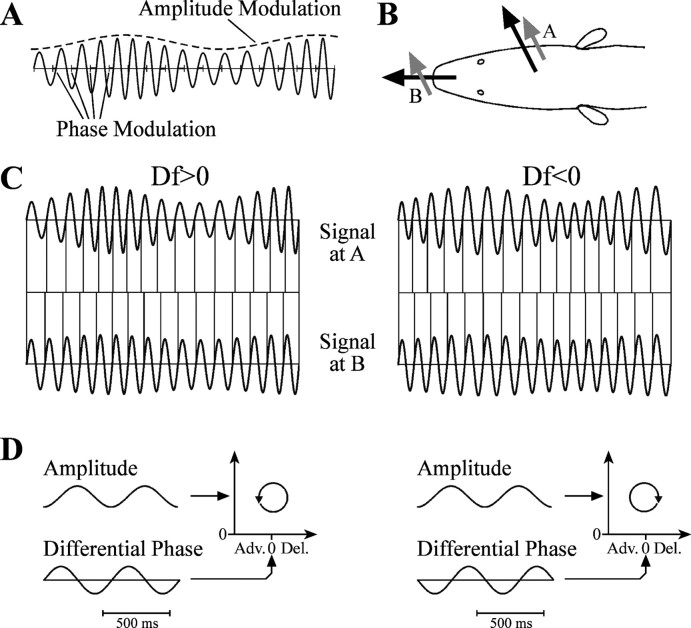Figure 1.
Sensory cues for the JAR. A, Combining two sinusoidal signals results in amplitude and phase modulation at a frequency equal to the frequency difference between the two sinusoids. The vertical ticks on the time axis mark the timing of zero crossings in the uncontaminated signal. B, The fish's own EOD is generated internally, leading to current flow perpendicular to the skin surface at every point (black arrows), whereas the neighbor's EOD is generated externally, leading to current flow through the fish in a single direction (gray arrows). Because the electroreceptors are sensitive to current flow that is oriented perpendicular to the body surface, the fish's EOD will be more strongly contaminated at body surface A compared with B. C, Modulations in amplitude and phase at body surfaces A and B for opposite signs of Df. The vertical lines mark zero crossings. D, Amplitude at body surface A and differential phase of body surface A relative to B for opposite signs of Df. The temporal relationship between amplitude and differential phase is reversed when switching the sign of Df, which results in a different direction of rotation in a Lissajous graph. Adv., Advance; Del., delay.

